Unlike yesterday, today the entire 2018 natural gas strip moved in tandem, rallying higher. February and March alternated between leading the move higher, with February spiking early in the afternoon and plummeting into settlement as February contract options expired. Even with a drop of over 10 cents into the settle the contract still logged a daily gain of over a percent and a half.
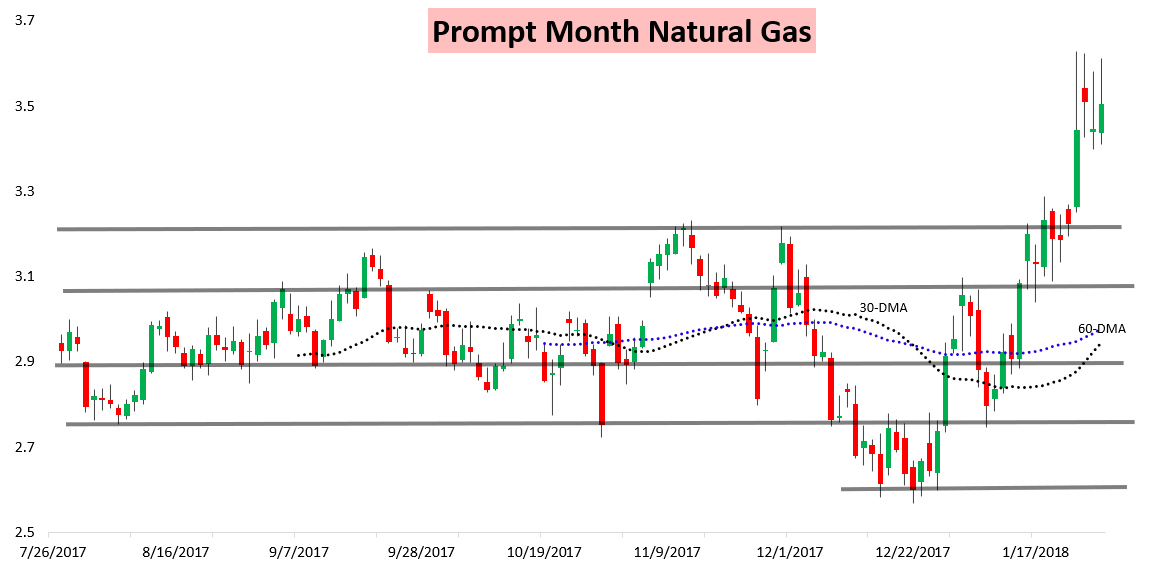
The move was pretty clearly weather-driven, with the front of the natural gas strip moving out far more than the rest.
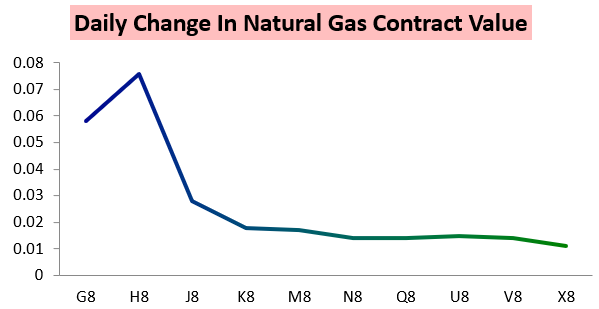
The result is that H/J moved out solidly on the day after a couple days of lackluster price action.
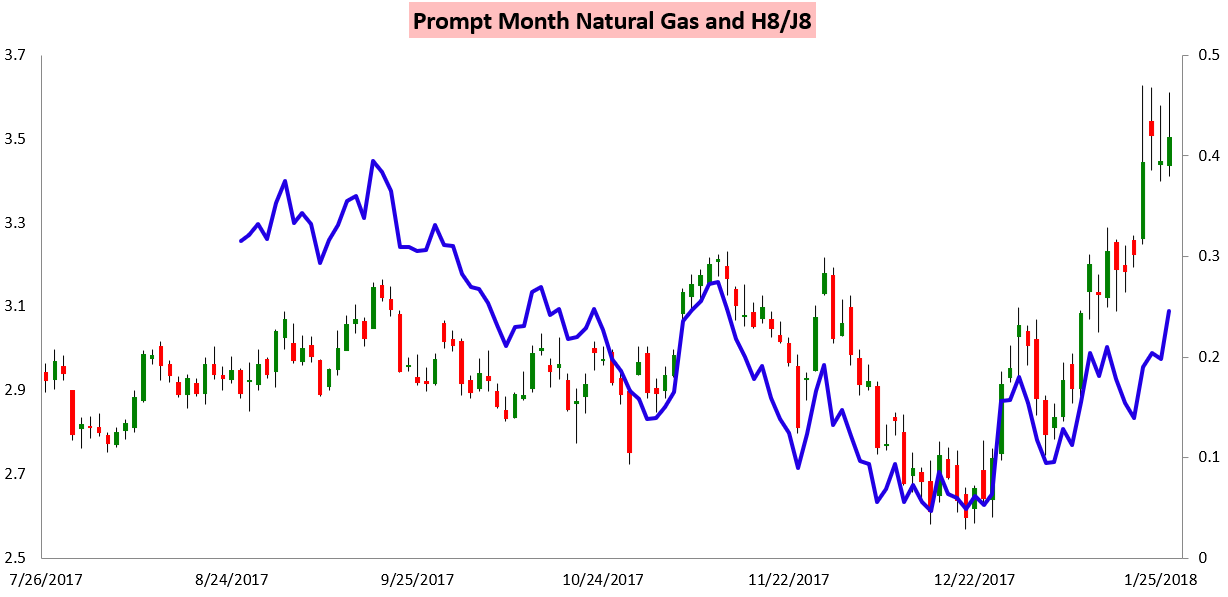
And, as we mentioned, G/H compressed into the settle with the February contract plummeting into options expiry, though losses in this spread were still not as large as yesterday, and after the settle, the February contract quickly recovered.

All this comes as traders attempt to determine whether shifts in February, and how significant any cold is going to be. In our Pre-Close Update we just published for clients we broke down our expected weather and natural gas trends into next week, and also took a look at how Climate Prediction Center forecasts have shifted, with the latest forecasts showing higher confidence in medium-range cold and just a tad lower confidence in long-range cold.
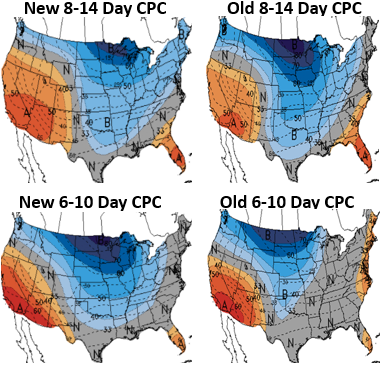
We certainly continued to price in some of these cold risks today, as in our Morning Update we outlined why we saw the March contract as likely to test the $3.2 level ahead of the weekend (it made it to $3.197, so guess it just was not our day).

In fact, all week we had been watching that $3.2 level, as our sentiment turned bullish early Tuesday morning as we helped subscribers capture this most recent run-up in prices. This comes as we continue to watch the Madden-Julian Oscillation (MJO), which is one measure of global tropical convection (or storminess) that can increase sub-seasonal weather prediction accuracy. In a note for clients back on January 11th, we explained that the European weather model was predicting too quick a breakdown of the MJO pattern, leading its output to be too cold for the end of January.

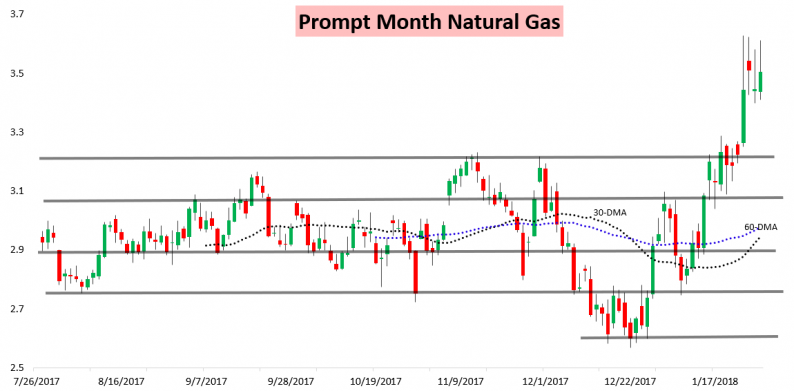











Leave A Comment